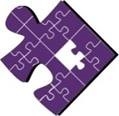


Troubleshooting Collaboration, Part II

Troubleshooting Collaboration, Part I

Save Collaboration Time by Empowering Individuals to Make Decisions

Following up on my June blog to save collaboration time by making meetings more efficient (or choosing not to attend meetings where your input isn’t helping you meet your individual and team goals), I want to address another point raised by Cross, Rebele, and Grant in “Collaboration Overload” (Harvard Business Review, Jan-Feb 2016). In it they concluded that, in order to combat additional time spent in collaboration, “structural changes might be necessary so that decisions can be made at support staff or lower manager levels.”
Does your team or organization empower you as an individual to make decisions to move critical work forward? If your answer is YES, that’s awesome; don’t waste your time reading further.
If you answered NO, then I have several other questions I want you to consider so you can put a price tag on what the choice of insisting (all or most) decisions must be made at higher level managers is costing your organization.
- How many levels in the management chain need to be involved before a go/no-go decision can be made?
- How many collaborators across how many departments/teams need to be consulted?
- How much time does it take to get to the go/no-go decision? I’m not just talking about time spent in a one-hour meeting where the decision is made. Consider:
- What is the prep time?
- How much time is spent coordinating everyone’s schedules (or delaying because people are not available)?
- Does a document or presentation have to be created? How much time does that take? And how many people are involved in creating or approving that deliverable?
- What is the lapsed time from critical issue being raised to getting a decision?
- Did continued work on the project/deliverables stall or slow down dramatically while you were waiting for a resolution or decision?
- What is the cost of the above delays in opportunity?
- Is your team’s reputation going to suffer?
- What is the impact to your company’s brand because you now have dissatisfied customers?
- Will you strain the relationship with your outside vendors because they can’t move forward with new work due to your internal decision making hoops?
- Did you/your team/your organization miss a chance for a new project or did you have to delay a new project while you were working through the delays in decisions making on the current project?
- What risks or additional issues were introduced due to the delay?
- What is the short-term and long-term impact to stakeholders? Customers? Other parts of your organization? Outside partners or vendors?
- What are the unintended consequences to each of the above?
Do the math on the answers to the above questions. Time is indeed money. Multiply the hours spent and/or wasted by the average estimated salary of the individuals involved. There are also costs associated with missed opportunities and hits to brand or reputation. Check your own organization’s history for a hint on those costs.
In my experience, I find the reason there are so many hoops and upper level decision makers required is because upper level managers aren’t confident with the critical thinking and decision making skills of their staff. There is a straightforward solution to that concern: provide them a framework or tools to improve or build their critical thinking skills.
In my June blog, I listed several questions from one of the seven categories of questions I teach in Vervago’s Discover Your Best Thinking with Precision Q+A. The majority of the questions listed above are from two additional question categories: Clarification and Effects.
I strongly recommend this workshop to organizations to enable all team members to have confidence that their thinking (and that of their colleagues and collaborators) is solid and complete. It gives managers (at all levels) the confidence to allow decision making at support staff and lower management levels, and frees up their time to be more strategic and proactive for the organization’s future.

Time spent in collaboration increased by 50%–what can you do?

Collaboration has been getting a good deal of press recently. One Harvard Business Review (HBR) article in particular raised some points I’d like to address. I’m referencing ‘Collaboration Overload’ from the January-February issue of HBR by Rob Cross, Reb Rebele and Adam Grant.
Eye catching were a couple data points:
- According to data the authors have collected over the past two decades, “the time spent by managers and employees in collaborative activities has ballooned by 50% or more.”
- At many companies the time spent in meetings, on the phone and responding to emails “hovers around 80%, leaving employees little time for all the critical work they must complete on their own.”
Let’s take this data as complete. (I haven’t had a chance to drill down into the analyses made: data collection, sample size and methodology, or size and location of the 300 organizations researched—global? US only?)
First let’s tackle the issue of too many meetings. How many of you are thrilled when a meeting cancels? Don’t we almost do a back flip of joy because we just got 30 minutes or an hour of our life back? The HBR article mentions a company who stopped recurring meetings for 2 weeks and after that break decided to make sure each meeting had an owner and an agenda. Agreed, I applaud that! And, let’s take that a step further:
 Don’t accept any meeting invitation that does not have both a purpose statement and an agenda! (I assume the person who called the meeting owns it.) What are you expected to do in the meeting: make a decision? Brainstorm solutions? Troubleshoot a problem? BTW, you can reply nicely when these items aren’t present in the invite: Tentative, what is the purpose of the meeting and what should I be prepared to discuss?
Don’t accept any meeting invitation that does not have both a purpose statement and an agenda! (I assume the person who called the meeting owns it.) What are you expected to do in the meeting: make a decision? Brainstorm solutions? Troubleshoot a problem? BTW, you can reply nicely when these items aren’t present in the invite: Tentative, what is the purpose of the meeting and what should I be prepared to discuss?
One of my long-term clients has a wonderful, nice culture. They are a pleasure to work with because everyone is so nice. Nice comes at a cost. They accept meeting invites without a purpose or agenda, because the invite arrived in their Inbox! After replying as I suggest above, and ideally receiving a purpose statement and an agenda, ask yourself:
- Am I the right person to attend this meeting? Is someone else a better representative?
- Have all the right people been invited, given the purpose of the meeting?
- Does this require a face-to-face and/or online (Skype for Business, for example) meeting? Or could this be handled via email?
- Will this meeting help me meet my quarterly or annual goals?
- Does this align with our strategic priorities?
- Does this draw on my strengths and interests?
The above are example questions from one of the 7 categories of questions that I teach in the Discover Your Best Thinking with Precision Q+A workshop developed by Vervago.
So, what can you do to spend collaboration time wisely, allowing more time for your critical work?
- Count up how many hours you spent in meetings last week.
- Apply my suggestions above to meetings you have scheduled next week.
- Hint: look at each and if there is no purpose or agenda, follow-up with “tentative” and ask for those items.
- And/or ask yourself the bulleted list of questions above to determine if you should accept the invitation or not.
- Do the math: compare the time spent in meetings for the week before you implemented these suggestions and the week you do implement them.
Think about the time and money you would save if your whole team implemented these ideas? Entire organization? I had a client whose whole team took the Discover Your Best Thinking with Precision Q+A workshop together about 5 years ago. As a result, “instead of our meetings going overtime, we’re now finished in about 45 minutes!” Let’s do some simple math on that statement: A team of 8 saving 15 minutes out of one meeting gives the team 2 hours back! What could your team do with that time?
In upcoming blog posts, I’ll discuss some other practical collaboration solutions to save you more time and more money.
Let me know how these tips work for you. I’d love to hear from you and am happy to answer questions. Email me at [email protected]

Are you Accountable, but have little or no Authority?
So far, I’ve discussed some practical tools to help you clearly communicate your collaboration goals or success criteria and identified other tools or techniques to help mitigate challenges. However, we all know these tools will not solve 100% of the challenges we face when working across groups. This is especially true for those individuals who are accountable for a key component, but they do not have authority over the Individual Contributors (ICs) who will be completing the myriad of pieces (work items) on time in order to piece together the puzzle (final deliverable to the Customer).
There are many titles for people who are accountable, but have little or no authority. I like to collectively call this role of influence the Herder.
You’ve probably seen a western movie where a cowboy (herder) was responsible for moving the herd of cows from one ranch to another many miles away with numerous opportunities for countless things to go wrong along the trail. Some of you are likely smiling right now because the phrase many like to use on collaborative efforts is: it’s like herding cats! Whatever your favorite visual, the bottom line is to be effective in this role, you must:
- Negotiate collaborative goals (scope, schedule) and resources with ICs and their managers (see blog article on “Did you get the go decision?”)
- Identify and monitor risks.
- Clearly define success or acceptance criteria.
- Delineate must-have vs. nice-to-have work items.
- Specify deadlines for integration into the key component or final deliverable.
Some of the common pitfalls that Herders can fall into include:
- Confusing “buy-in” for an idea with a “go”/green light decision.
- Forgetting to gather (or routinely gather) information from the ICs on whether or not a deliverable can be completed in the specified timeframe.
Recognizing these pitfalls can help Herders proactively determine best practices to mitigate them. Think about a recent collaborative effort in which you were unpleasantly surprised when a work item you were expecting from an IC was not completed on time or according to specific acceptance criteria. What could have been done so that instead of being surprised, you would have been pleased with the work item received? You may have just discovered a new best practice to use in future collaboration across groups.

Common Collaboration Complaint: Conflicting Priorities—Did you get the “Go” Decisions?
As discussed in a blog article last May, one of the consistent complaints I receive when I ask clients about their top 3 collaboration challenges, is “conflicting priorities.” In that blog, I introduced a tool to help identify incentives or benefits for collaborators. That’s only one solution to this complex challenge. Another aspect for resolving conflicting priorities is the influential role of the decision makers (notice that last word is plural) when securing a “Go decision.”
You may be saying, wait a minute you gave us a tool to help decision makers define collaborative success, isn’t that equivalent to the “go decision?” True, when collaboration is done well, the project, or collaborative effort’s, sponsor holds a kick-off meeting with all involved and clearly defines the success criteria, using our CSD tool (see blog dated July 7, 2015) as a guideline, along with posting the video of the kick-off meeting on the website, so that those who join the effort later can quickly get up-to-speed.
So, if the collaborative success is clearly defined with all parties, what causes the conflicting priorities? In a word, managers. I’m not blaming them as a collective group. I’m pointing out that the upper level executive sponsor is not the only Decision Maker (DM) in an influential role in a collaborative effort.

- Did you confirm a “Go” or green light decision at all levels?
- Did you ask what other priorities (daily work) or significant initiatives could possibly compete with the work you are requesting to be done by a certain date?
DMs appear in all roles of collaboration: Individual contributor (IC), Key Component, and Final deliverable owner (often, but not always, the Project Sponsor)
One of the most overlooked DMs is the manager of the IC, particularly when that IC doesn’t report to your manager. Have you ever experienced this situation?
- You send an email to an IC and ask: “Would you be able to do X for me by next Wednesday?”
- The response is “Sure, no problem.”
- Tuesday late afternoon, you send an email stating, “Looking forward to getting X from you tomorrow.”
- The response, “So sorry. I wasn’t able to get to this.”
Ouch! What happened? Two things:
- You didn’t ask the IC’s manager for the “go decision” that your work item would fit within the IC’s list of daily or upcoming work priorities to assess if your request was even feasible.
- Assuming the go decision was secured, you didn’t check with the IC once or twice (or more depending on the timeframe) before the work item was due to verify the item is on track and/or meeting your definition of success.
Action item: Review the significant work items you are requesting and lead a 15-30 minute meeting with the IC, his/her manager, and your manager or the DM of the Key Component that is dependent on this work item being completed successfully and on time, to discuss priorities and potential competing priorities.

Collaboration Across Generations
 A colleague of mine who read my latest blog sent me an email that read, in part: “Good info on the roles in collaboration, but how do the roles influence collaboration across generations?” Great question! First, it’s worth noting that a collaborator can be of any generation and be in one or more of the four roles of we define in effective collaboration. (To date, I’ve discussed two of the four in my blog: individual contributor and customer.)
A colleague of mine who read my latest blog sent me an email that read, in part: “Good info on the roles in collaboration, but how do the roles influence collaboration across generations?” Great question! First, it’s worth noting that a collaborator can be of any generation and be in one or more of the four roles of we define in effective collaboration. (To date, I’ve discussed two of the four in my blog: individual contributor and customer.)
Second, what I’ve noticed as a significant difference between Millennials, Gen X, Baby Boomers, and Traditionalists, is that millennials have little patience for lack of clarity, which is demonstrated specifically by the lack of:
- setting clear expectations,
- defining priorities and success criteria, and
- providing tools or giving direction to the millennials to create tools to support the collaborative effort.
Traditionalists, Baby Boomers and Gen X have typically had the attitude that if the work is not clearly defined, they’ll just figure it out. While tenacity and perseverance are good qualities, they come at a cost, primarily in wasted time. Millennials don’t like wasting time. They are used to finding what they need in short order, and they excel at this task. They want to be seen as valid contributors to the team/work in short order as well. Ambiguity in defining collaborative efforts for millennials comes at two high costs:
- If they perceive (often rightly so) that the team/organization doesn’t have their act together, then they look for opportunities elsewhere. This results in an expense that most companies don’t track or report: the cost of hiring/recruiting the millennial, training (classes and/or on-the-job) over X months, followed by repeating the effort again when the individual quits.
- The lack of information, leads them to seek it out on the internet or intranet. The danger here is they are new to your organization and therefore lack awareness of the credibility of the source of the data they quickly find.
 So what can be done to give clarity for all generations in a collaborative effort? At a minimum:
So what can be done to give clarity for all generations in a collaborative effort? At a minimum:
- Define Collaborative Success, including the priority of deliverables and noting major milestones or checkpoints in a one to two-page document.
- Identify all team/individual contributors and their specific deliverables along with who is dependent upon their work completing on time.
- Conduct a 1-hour kick-off meeting for the project/collaboration to set expectations. Video/record the meeting so that it can be referenced by new team members who join after the kick-off is held.
The above are just a few examples of the tools and best practices we discuss in the Cross Group Collaboration workshop. Each can be customized to meet the needs and culture of your organization. Bottom line: they provide clarity and save time no matter what generation is involved in the collaborative effort.

How to Recognize When You/Your Team is in the Role of Customer
Following our discussion about the influence you have in a specific role (my previous blog was about the Individual Contributor), I’d like to next address your effectiveness in the role of “Customer.”
We define “customer” as the entity (internal or external to your company) who desires a “deliverable.” The “entity” could be an individual, a team, a company or a demographic of people, for example smartphone users.
The “deliverable” could be:

a specific work item that contributes to a key component of the final product or service

a key component, and/or

the final product or service.
The biggest challenge I’ve found is that individual contributors and teams responsible for key components or even the final product/service often don’t recognize when they are in the role of customer.
- If you/your team are responsible for a key component of the requested final product or service then you are the customer to the individual contributors who are producing the specific work items you need to integrate into the final key component.
- If you/your team are responsible for integrating all of the key components to produce the final product or service for the ultimate customer, then you are the customer to each team who is producing a key component.
To be effective in the role of customer on a given collaborative effort, ask yourself:
- Have you defined clear goals and success criteria?
- Have you identified the distinction between the “must have” elements (features or requirements) and the “nice-to have” elements?
- Have you specified the consequences if the work items/key components/final deliverable is late or does not meet expectations?
- For internal efforts, have you secured the “go” decision from the Decision Makers? For example, the manager of an individual contributor producing a work item, or the team and/or department manager producing a key component? Remember, for most collaborative efforts, individuals and teams do not report to the same manager or up the chain to the same hierarchical structure. Therefore you need to ensure your requested deliverables are prioritized to be completed along with or higher than the competing daily work priorities of the individual(s) or team(s).
In my experience, for most collaborative efforts you’ll find yourself in more than one role. Determine if you are being effective in each one. It is not uncommon to be very effective in one role and ineffective in another. The more roles you’re in, the greater the risk. This can be mitigated. You just have to recognize and plan for it.
Individual contributors can be effective and influence collaboration success
I’d like to follow-up on the last blog article regarding the role you’re in for a collaboration effort and how effective you are in that role (or roles).
Let’s tackle the issue of influence, starting with the Individual Contributor (IC)—the person who actually completes a work item that is often integrated into a Key Component Dependency. The work item could be writing a presentation or document, developing or testing code, analyzing data, etc.
In my experience, the IC often feels powerless over the outcome of the final deliverable. Or, the IC feels stuck between meeting the daily job deadlines of his/her direct manager (DM) and the work item deadlines of the “Project Manager” (there are numerous titles for this role) for the collaboration effort. To further complicate things, it’s common that the DM and the project manager report into different management chains.
Since there are so many titles for the project manager or person who is accountable for a deliverable, but who has little or no authority over the individuals who help build it, I have chosen to call this role “Herder.” (This name came from watching old western movies with the cowboy moving the herd from one ranch to another many miles away.)
- ICs actually have a strong ability to ensure their work items meet the needs of both their DM and the Herder:
Schedule a meeting with the 3 of you (IC, DM and Herder) to set clear goals and expectations, determine and clarify resource requirements, and define the success criteria for the work item(s). If the IC has a different vision of what success looks like than the Herder, the work item will fail, and ultimately the Key Component Dependency and Final Deliverable will fail or not meet the needs of the Customer.- Define priorities and be specific: What work items from the DM takes priority over the collaborative work items from the Herder? And vice versa.
- Establish checkpoints or milestones when you can meet with the Herder to verify the work item is on track to meet the defined success criteria. This overcomes the most common pitfall of ICs—they move forward and complete the work item without getting direction from the Herder or checking in along the way.
We all have work items where our role is that of an Individual Contributor. There’s no need to feel powerless. Take charge and control over your success.
